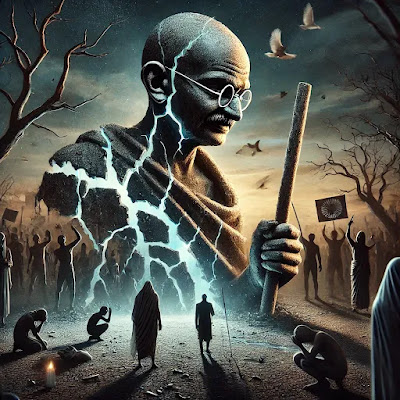For Whom The Bell Tolls
Hello everyone, this blog responds to the task assigned by Megha ma’am. Which is related to Earnest Hemingway’s novel.
#Critical Analysis of the end of the novel "For Whom the Bell Tolls".
For Whom the Bell Tolls on somber and poignant themes of sacrifice, inevitability, and connectedness. It is in such a scenario that Robert Jordan finds himself gravely injured and utterly unable to get away with his comrades. Finally, in those last moments of his life, Jordan accepts the inevitable with his stoic determination, choosing to stay behind, delaying the approaching fascist forces in order to provide his companions time to escape. This act epitomizes the novel's recurring exploration of individual sacrifice for a collective cause.
The ending is deeply emblematic of Hemingway's minimalist style and his philosophy of existential courage. The internal monologue of Jordan represents his reconciliation with death, letting the reader understand his thoughts before his final stand. His using his last few moments to add to the Republican cause, at the cost of certain death, shows his maturity and commitment to the cause for which he is fighting.
Hemingway leaves the ultimate fate of Jordan ambiguous, which makes the ending of the novel even more emotional. This kind of ambiguity echoes the uncertainty and tragedy of war itself, underscoring the fact that wars are often inconclusive and profoundly personal. This way of ending the story helps Hemingway shift the focus of the reader from the act of sacrifice itself to the emotional and philosophical undertones of the sacrifice.
Finally, the last pages of the novel clarify the central metaphor of John Donne's meditation: no man is an island, entire of itself. Jordan's sacrifice is not for personal glory but for the survival and freedom of others. By doing so, Hemingway reinforces the idea of interconnectedness among humans, a theme that resonates throughout the novel.
#In what ways the flashback technique was used in "For Whom the Bell Tolls?
Hemingway uses the flashback technique in For Whom the Bell Tolls to give the reader a background and context to his characters, especially Robert Jordan. These flashbacks serve many purposes, enhancing the story while providing insight into the motivations and histories of the characters.
Flashbacks are important moments in Jordan's life, such as his initial idealism and reasons for joining the fight against fascism. Through these flashbacks, readers get to understand the moral and emotional journey he goes through, which makes his decisions in the present more poignant.
In Jordan's memories of love, loss, and vulnerability, Hemingway develops a layered and multi-dimensional protagonist. For instance, when Jordan thinks about his relationship with Maria, their bond takes on an emotional dimension as it contrasts the tenderness of love with the brutality of war.
The flashbacks also give a wider view of the Spanish Civil War, shedding light on its complexities and the motivations of various factions. These recollections help Hemingway paint a vivid picture of the human cost of the conflict, adding layers of realism and gravity to the story.
Some flashbacks foreshadow events which are to be seen later with a subtle sense of inevitability, aligning well with the themes of fate and sacrifice in the novel. For example, Jordan's memories of past battles foreshadow the war's toll on him and his fellow soldiers, not only in physical pain but also emotional.
Hemingway expertly weaves the flashback throughout the novel seamlessly, creating and then blending past into present in the most organic manner possible. The results of these different times create stronger emotional impact; the reader not only understands and feels the load of the decision the characters must make but the shadows of their dark pasts too. Flashbacks are not extraneous to this novel but interwoven features that make for a more realistic study of loyalty and love in respect to the human spirit against a backdrop of war.
References:
The Hemingway Society: Home, https://www.hemingwaysociety.org/ . Accessed 18 January 2025.










